Media | Articles
11 years, 600 rebuilt Defenders, an IPO: ECD has big plans
Last Wednesday morning at 9:30 a.m., Scott Wallace and the other founders of ECD Automotive Design stood at a podium in the Nasdaq MarketSite, located in the northwest corner of a 48-level skyscraper in Manhattan. As video advertisements for ECD beamed out from the front of the building across Times Square, Wallace, the CEO of the company, and the others all pressed a big button on a computerized table. Bells rang, signaling the opening of the Nasdaq stock exchange.
The bells also signaled the beginning of trading for ECD (formerly known as E.C.D., but the company has dropped the periods), now listed on the stock exchange as ECDA. “We’re moving into a new era—not just for ECD, but for the classic-car restoration business in general,” Wallace said.
He means that. Just 11 years ago, ECD began life as East Coast Defenders, importing used-up 1983–94 Land Rover Defenders from Great Britain to the United States to rebuild and modernize them. That remains the core business, but the company has added the Land Rover Series IIA, the Range Rover Classic, and the Jaguar E-Type, which starts at $299,995 and has a 450-horsepower GM LT1 V-8 engine.
All this happens in a new, very modern, 100,000-square-foot facility in Kissimmee, Florida, just south of Walt Disney World in Orlando, just up the road from where the original factory once stood. Called the “Rover Dome,” the building contains the new factory, with two assembly lines, soon to become three. It also contains the offices of ECD Automotive Design. Everything’s under one roof.
Wallace gave me a tour of Rover Dome, which is not a dome but a long continuous building, a few weeks before the company went public. “See this employee break room? It’s bigger than all the offices combined in our original location.” Even at 100,000 square feet, Rover Dome will soon need to be expanded.
Marketplace
Buy and sell classics with confidence

ECD has delivered nearly 600 vehicles since it was founded, many of them priced at $300,000 or more. In what’s called a “business combination,” EF Hutton Acquisition Corporation, through a special purpose acquisition company (SPAC) formed by affiliates of EF Hutton, is providing capital that could go toward the needed expansion.
The Hutton-led effort agreed to a $15 million private investment in public equity (PIPE) after ECD was assessed at a pro forma enterprise value of $330 million. Wallace will continue as CEO, alongside fellow founders Tom Humble, Emily Humble, Elliott Humble, and CFO Raymond Cole.

Why Land Rover Defenders? Several of the founders grew up in the Midlands of England, 40 miles from the factory that built Defenders. “They were surrounded by Defenders from an early age, and were mostly driving around on friends’ farms with bales of hay, the family dog, and sometimes the occasional farm animal,” says a brochure for the company. Overseas, the Defender isn’t the trendy vehicle it is in the U.S.—it’s a genuine workhorse.
So ECD imports often-battered Defenders from across the pond. They are literally stripped, and their old engines and transmissions, which are stacked up behind the Rover Dome, are parted out to what is apparently a surprising number of people who are restoring Defenders. Back inside, ECD disassembles the Defenders down to their bare, sandblasted-and-painted frames. Then it rebuilds them with modern components, mostly with new V-8 engines and transmissions from GM, up to and including a supercharged LT4 version.
Will ECD ever run out of Defenders to import? “Never,” Wallace said. “They’re everywhere.” The company has seven employees on the ground at Burton-on-Trent in England who do nothing but source Defenders and load them in containers for the voyage to America. There’s a healthy aftermarket making Defender body panels, but the one thing ECD must source from an original truck is the roof panel, Wallace said. “No matter how hard we try we can’t find roofs that really fit the vehicle.”

The majority of vehicles ECD sells are built to spec, entirely bespoke. At one end of the Rover Dome is a comfortable couch, across from a 72-inch TV screen. It’s next to the office of John Price, director of vehicle design. His assistant sits at a laptop while you sit on the couch and design your perfect vehicle.
Which I did, choosing a longer Defender 110, with room for seven. We started out with the color—I’d seen a lovely seafoam green Defender 90—the smaller truck, with room for five—on the assembly line. Price sorted through several shades until I found the one I liked. (Often, customers know exactly what they want—a woman recently flew to Kissimmee on her private jet to deliver a sample of the color she wanted.)
I opted for a beige leather interior, white and silver trim, including the rollover cage outside the body, and silver wheels. Flooring in the rear was polished wood. For power, being a simple man, I chose a 430-horsepower Chevrolet LS3 with an automatic transmission. I selected a suspension that was firm but not brutal. You can spend an hour designing your Defender—ECD will even select the proper dashboard clock, and show it to you on the big screen. Once satisfied, all I needed to do was come up with about $300,000 (they need $25,000 down). I was $299,975 short.
If you don’t want to wait for a bespoke build, ECD typically has some completed Defenders for sale—17 vehicles at this writing, including three 1995 Range Rovers that have been completely rebuilt, one sporting a supercharged LT4 V-8 for $209,995.

The current selection of ready-to-wear Defenders includes both the 90 and 110 models, topping out with a 1995 110 for $299,995. It and several others have an even 1000 miles on the clock—all the builds are driven that far before they’re sold to make sure nothing is wrong. Even if there is, you get a 24-month transferrable warranty and 24/7 roadside assistance. The least expensive Defender available for purchase is a previously owned 90, powered by a 5.3-liter V-8. It is $149,995.
So what does the average ECD Defender buyer do with their purchase? The majority actually use them for off-roading—often the Defender is kept at a vacation house or ranch. But some customers use their Defenders as daily drivers, just like buyers of brand-new Defenders do. (For comparison’s sake, the little 2024 Defender 90 S starts at $56,400, while the big Defender 130 V-8 with 493 horsepower starts at $116,600, plus $1475 in shipping.)
A walk through the Rover Dome is enlightening. The hundred employees are scattered through various modules, ranging from upholstery to the thoroughly modern paint booth. Most are wearing company-branded tee shirts and jeans or shorts; it’s a very casual environment. The facility is spotless, well-lit, and cooled with Big Ass Fans (that’s the name of the company). There are a lot of British accents, including those of Wallace and the other founders.
At the far end of the building are the dual assembly lines, the one on the left for Defenders, the one on the right currently dedicated to Jaguar E-Types. The cars are acquired the same way the trucks are, usually tired examples that are taken down to bare frames and rebuilt completely, typically with a new powertrain from GM.
That said, a growing part of ECD’s business is in electric conversions. It started out using Tesla motors and batteries acquired through the aftermarket, but found that these are particularly difficult to tune. ECD is now using Ampere units—Ampere is a company based in Dawsonville, Georgia, featuring “simple drop-in electric drivetrains.” One of the available Range Rovers at ECD has electric power—it’s for sale at $279,995.
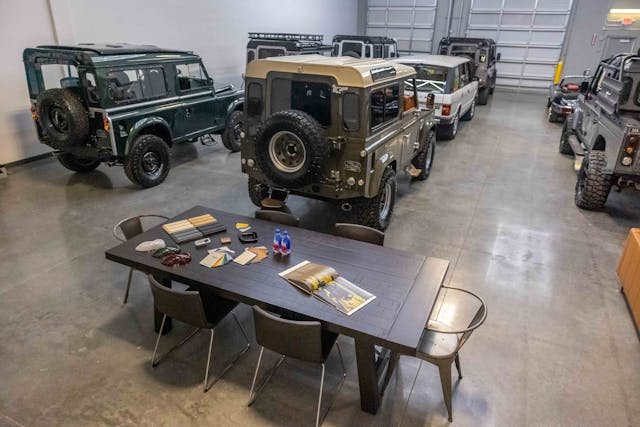
ECD has built one electric Jaguar E-Type, and there was another one on the assembly line when I visited. The one that is already built has three batteries—two up front, and one in the trunk, for a total of 42 kWh. That’s good for 450 horsepower, just like the LT1 gas engine, and a range of 150 miles.
After the tour, I took a quick drive in the rain in a new Defender 110 with the 6.2-liter LS3 and an automatic transmission. It was remarkably buttoned-down, the air suspension absorbing bumps and potholes like no 1983–94 Land Rover Defender before it. Even for a relatively heavy vehicle, power was more than plentiful. Aside from the looks, the only real holdovers from the original were a startlingly wide turning circle and pedals that were so close together I needed to left-foot brake.
Otherwise, ECD’s truck looked and felt like a brand-new vehicle which, for all intents and purposes, it was.
Scott Wallace and his team are planning to go big, or go home. Will other aftermarket builders follow suit?
We’ll see.
***
Check out the Hagerty Media homepage so you don’t miss a single story, or better yet, bookmark it. To get our best stories delivered right to your inbox, subscribe to our newsletters.
















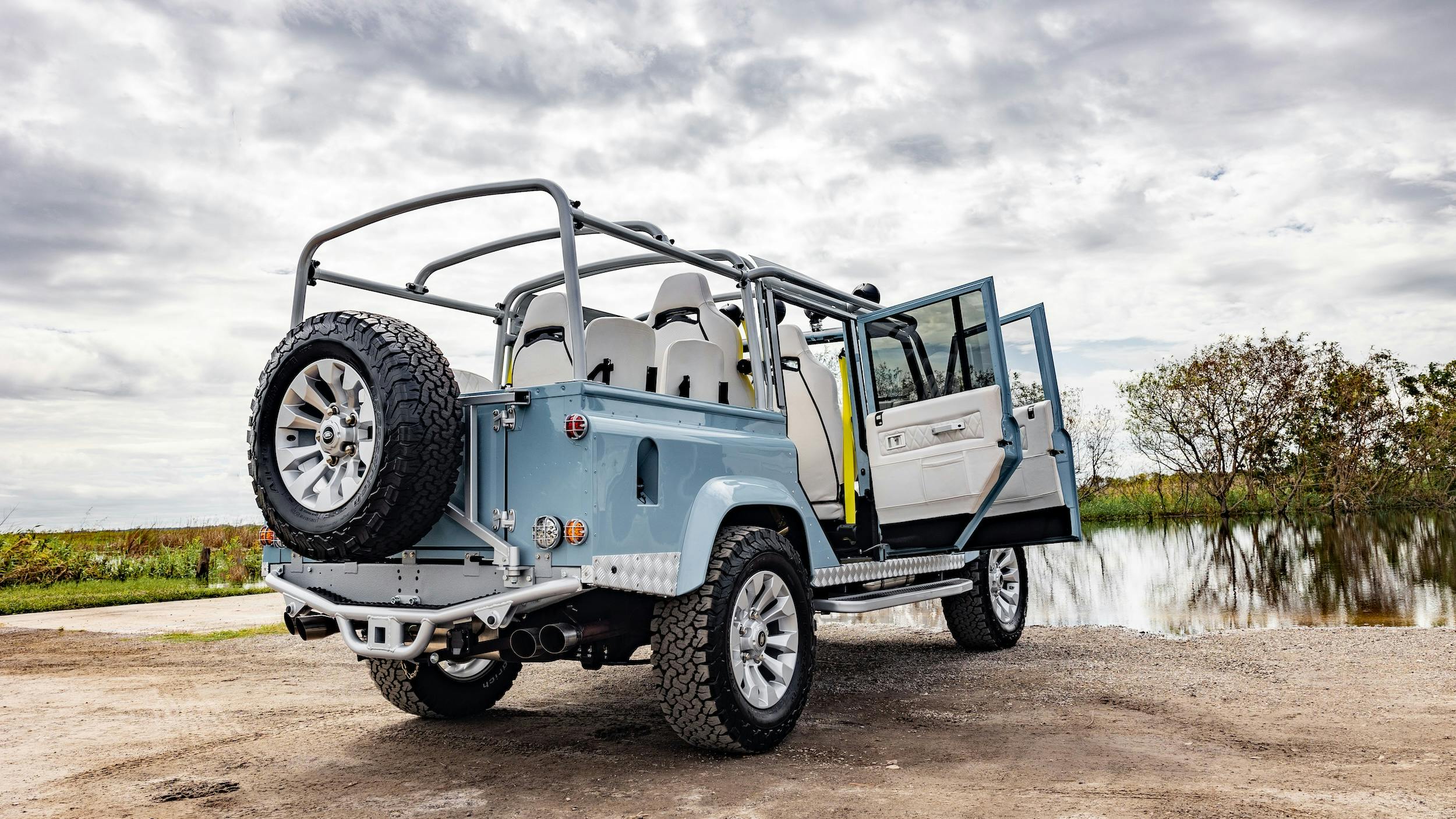
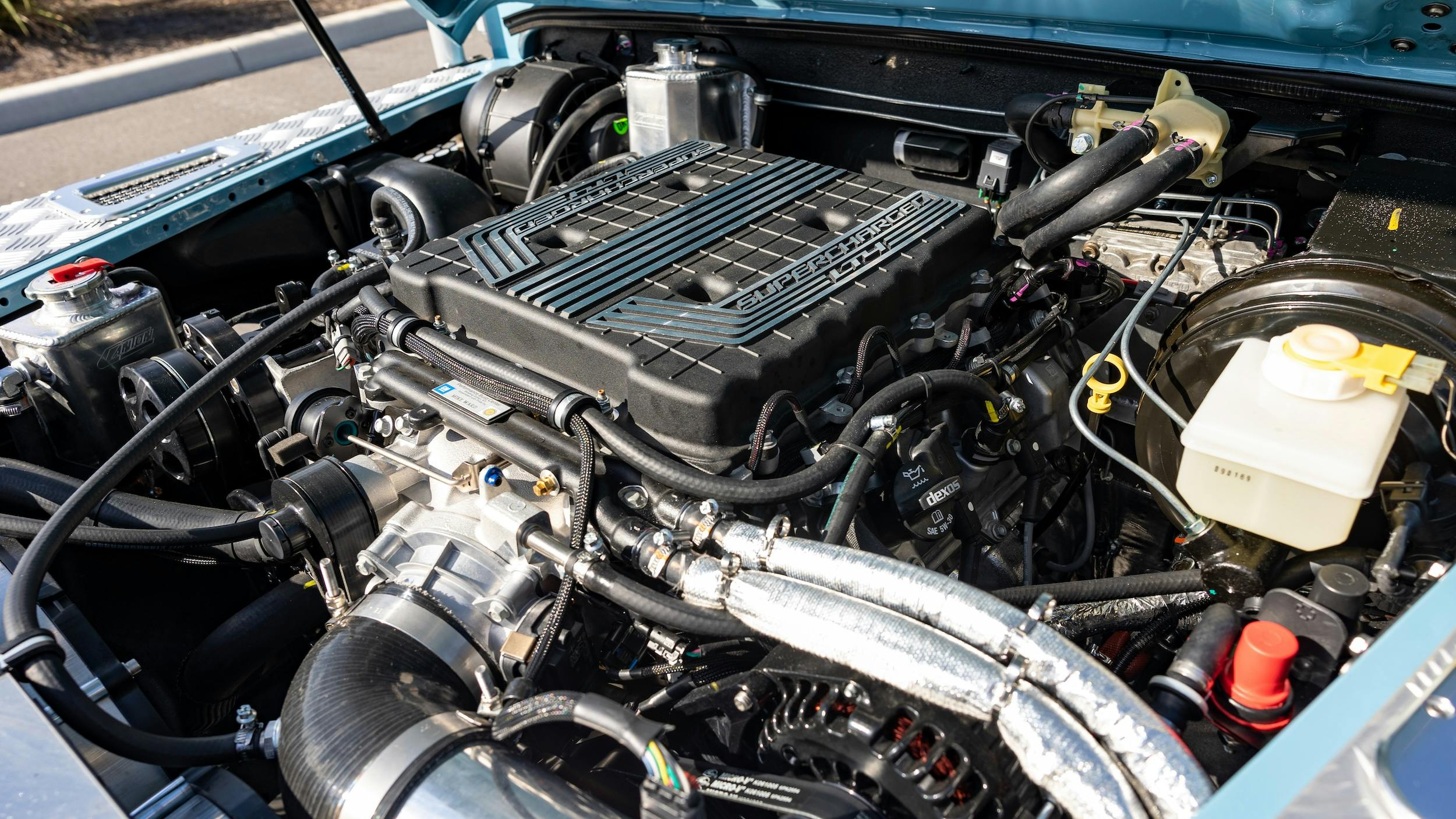









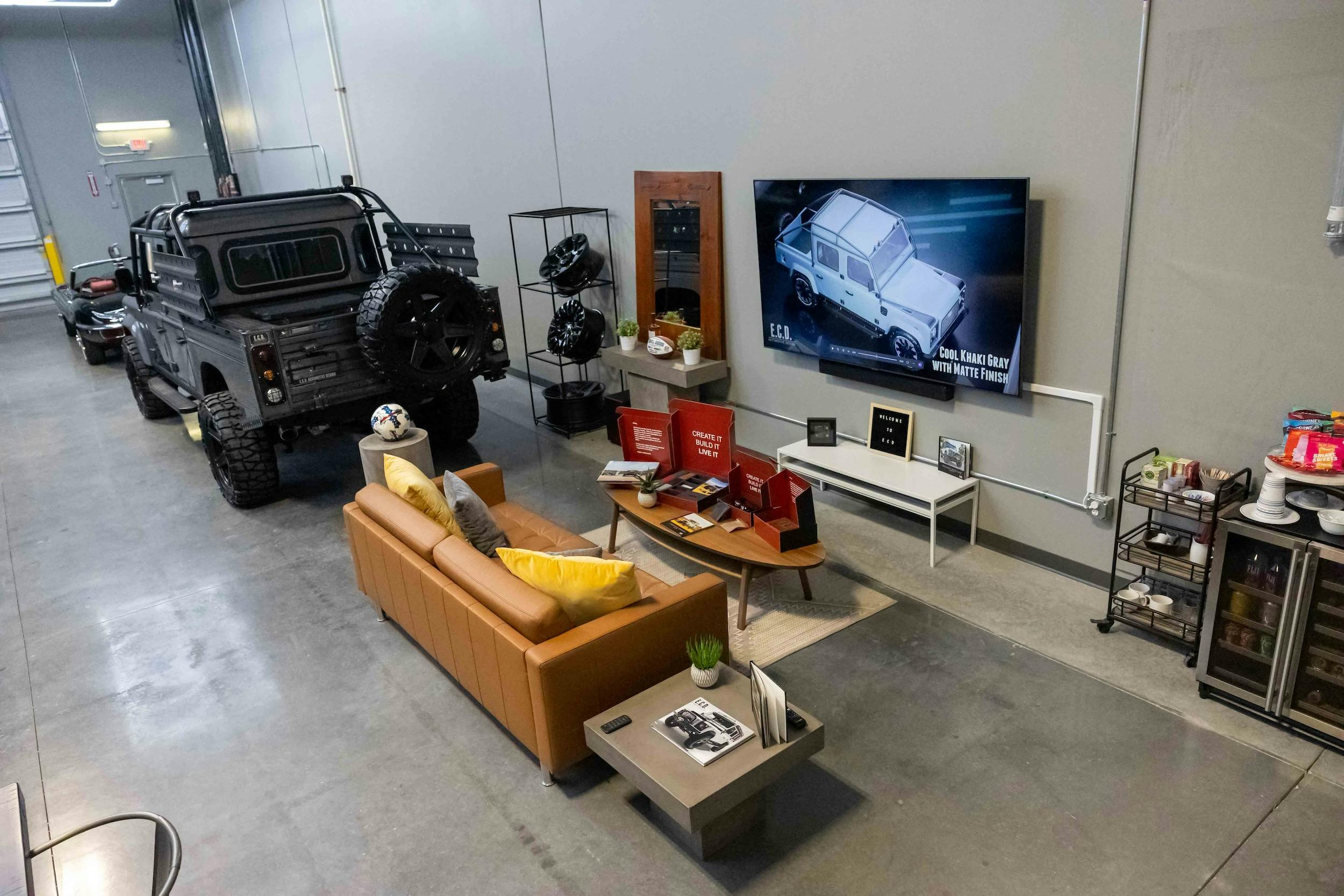

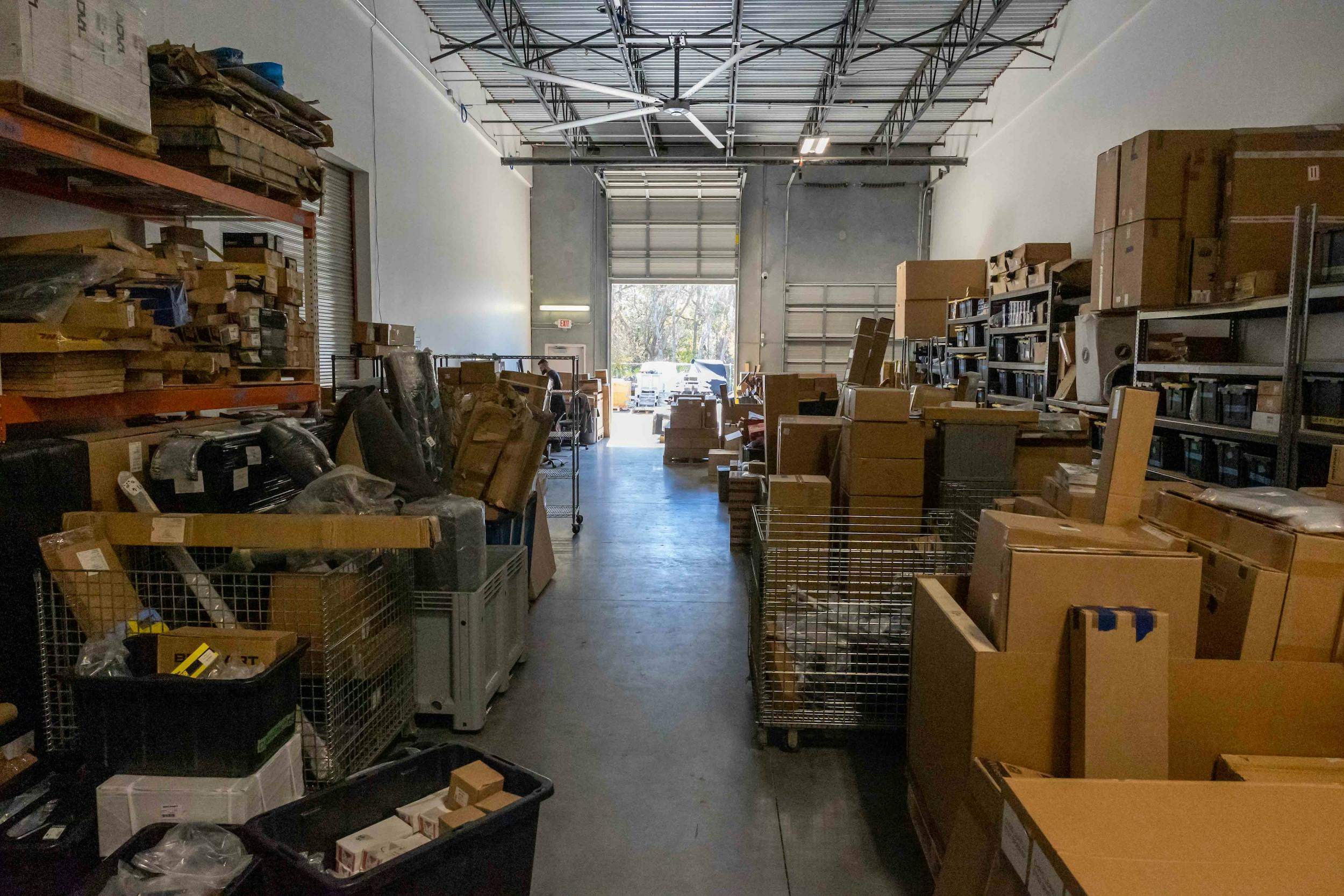
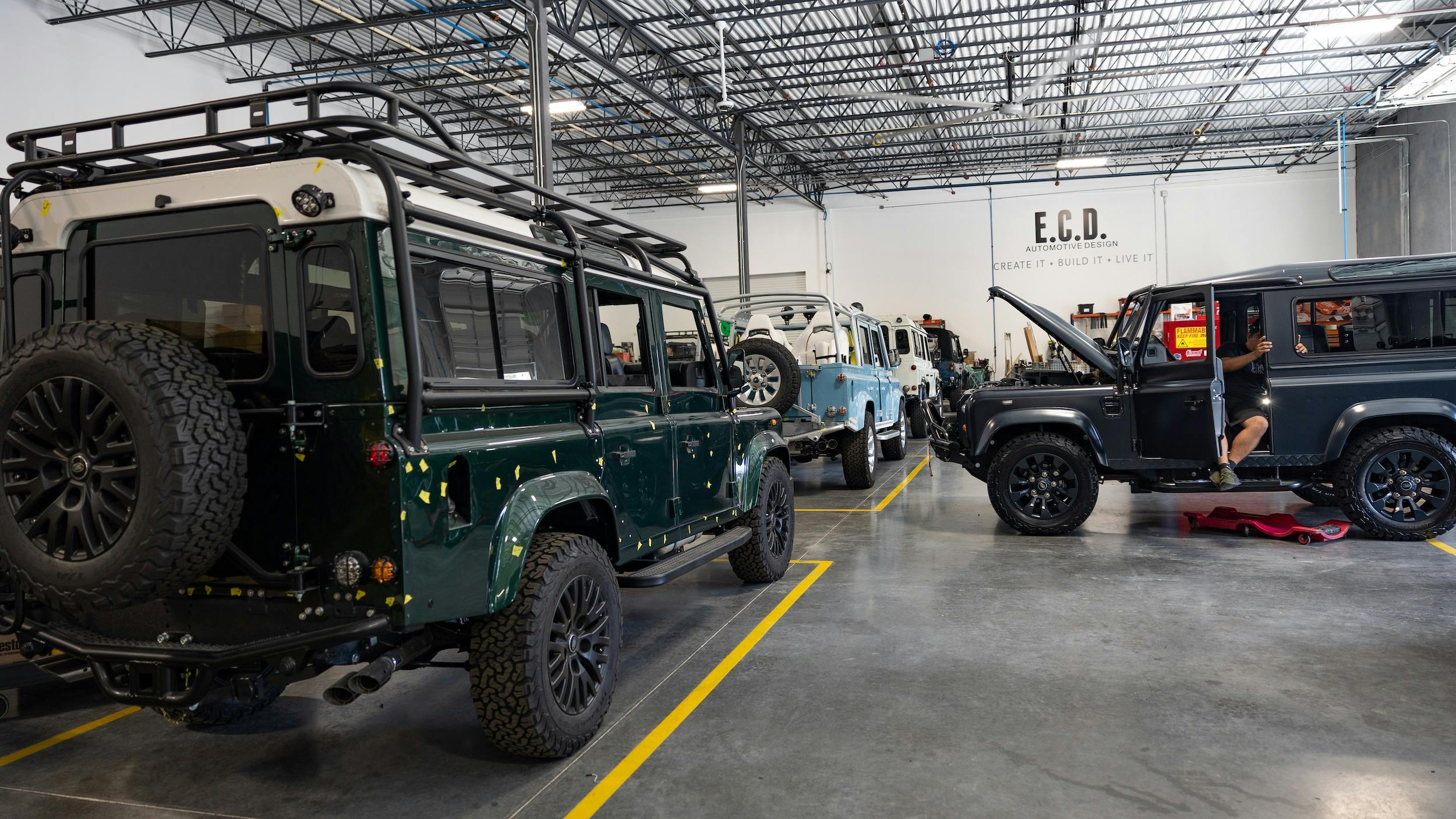





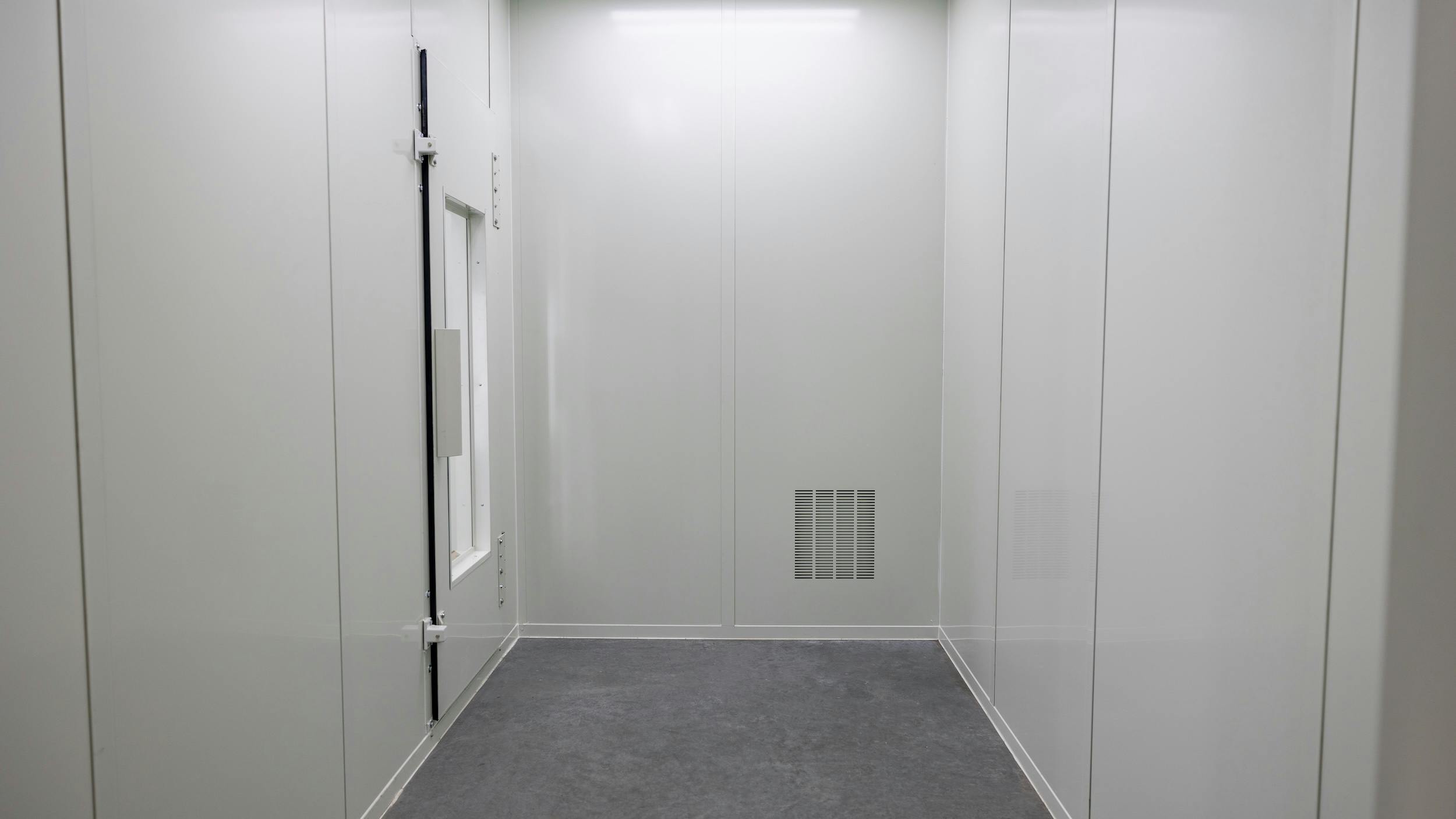



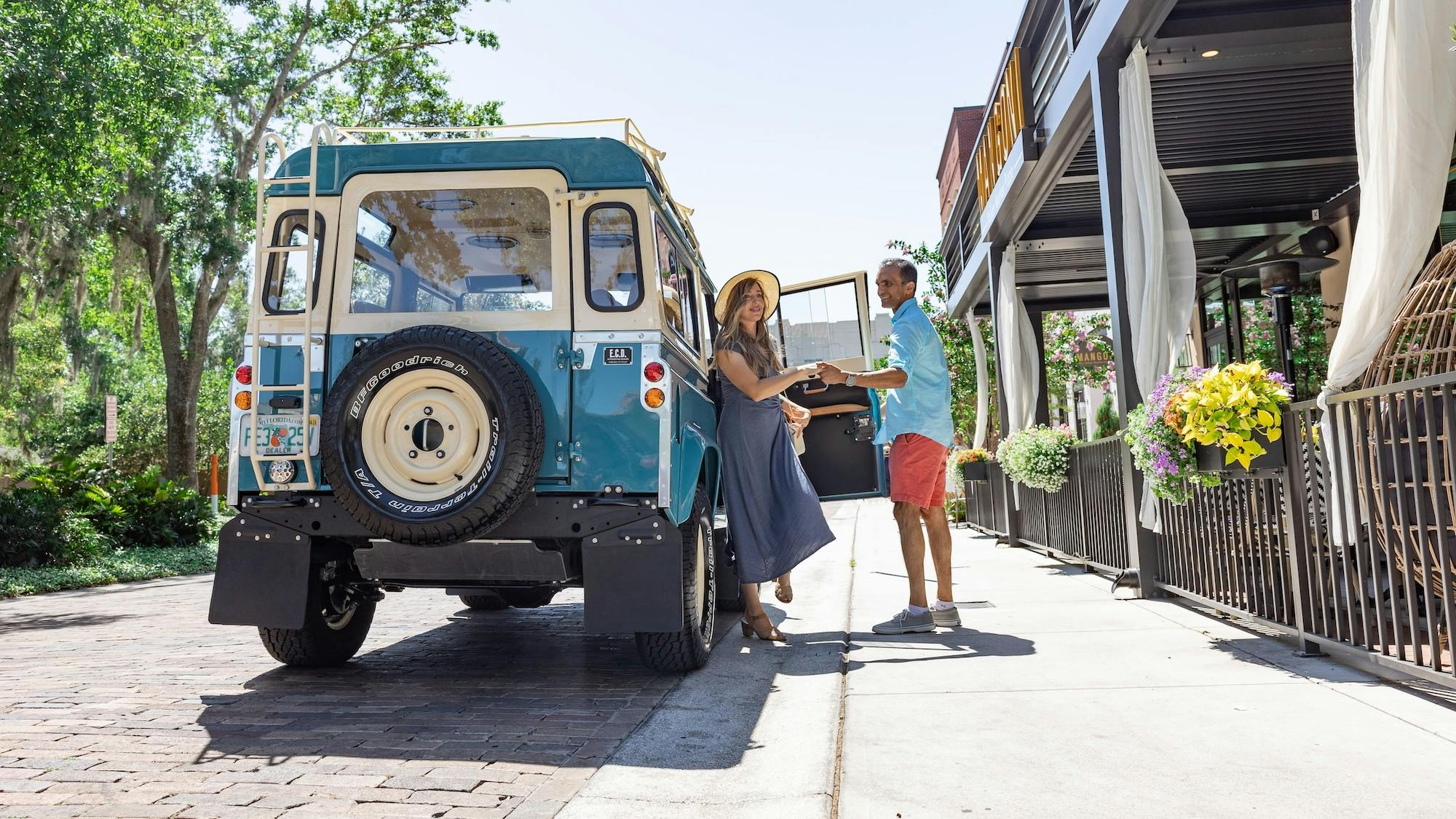
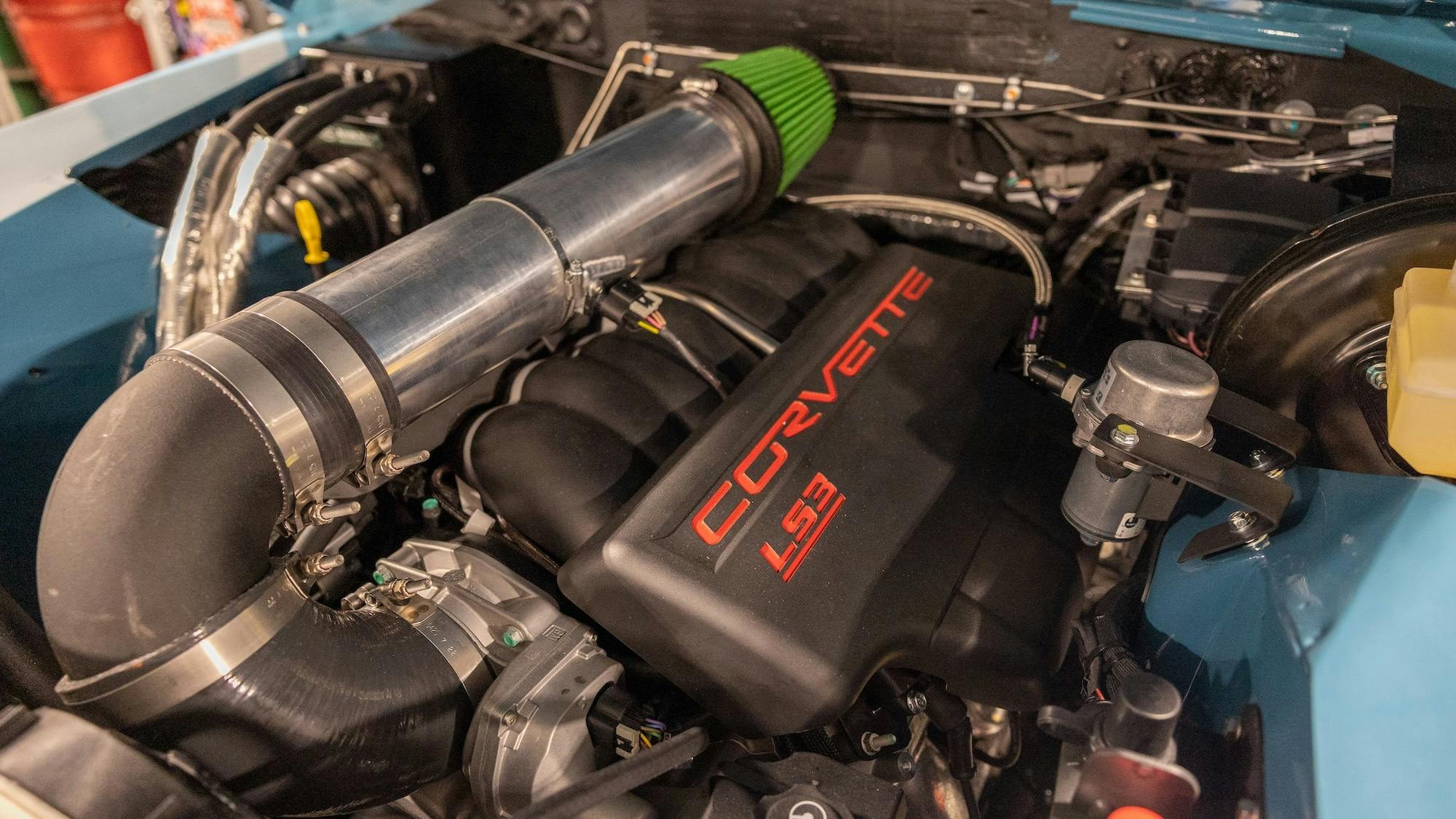


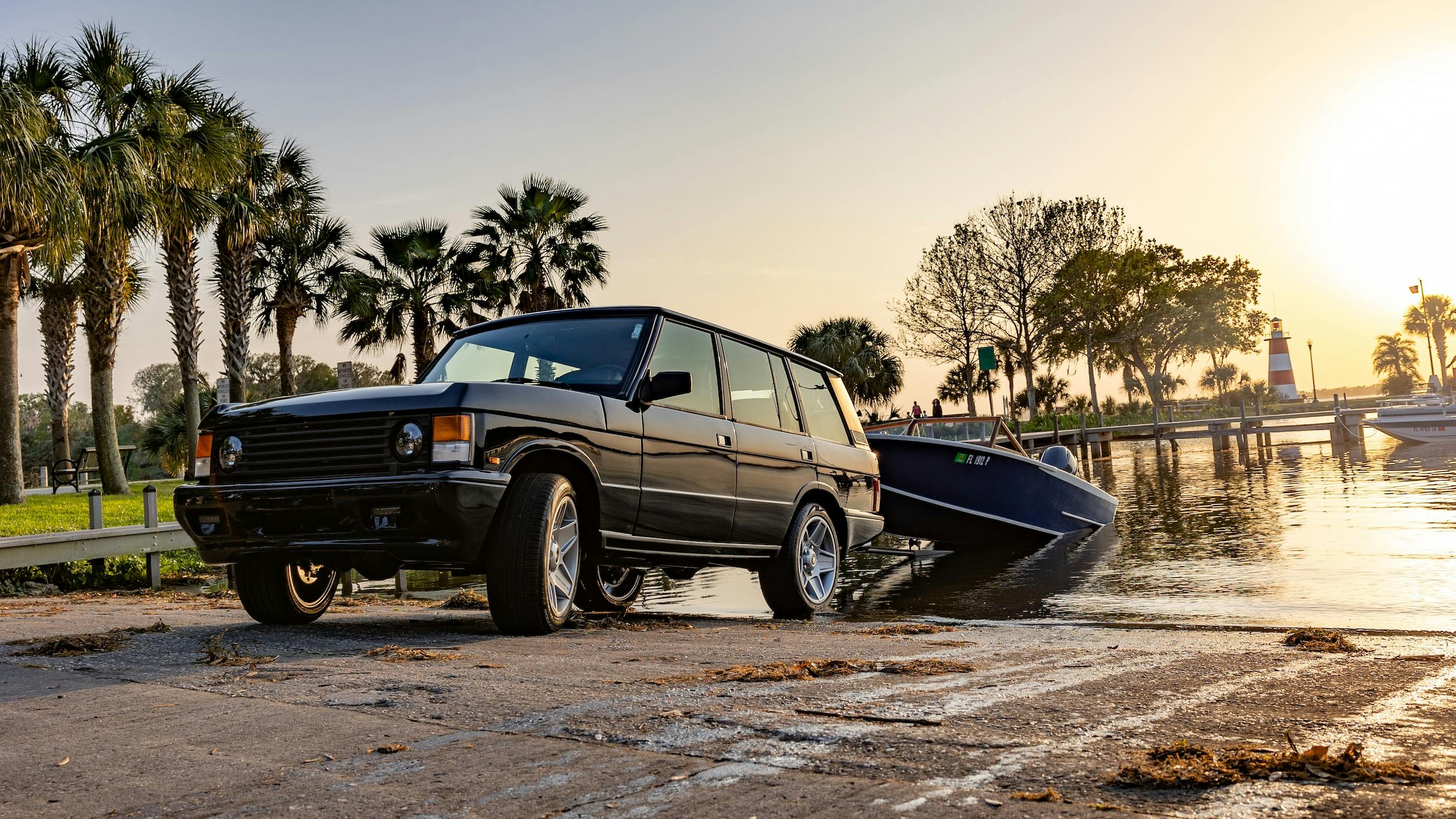
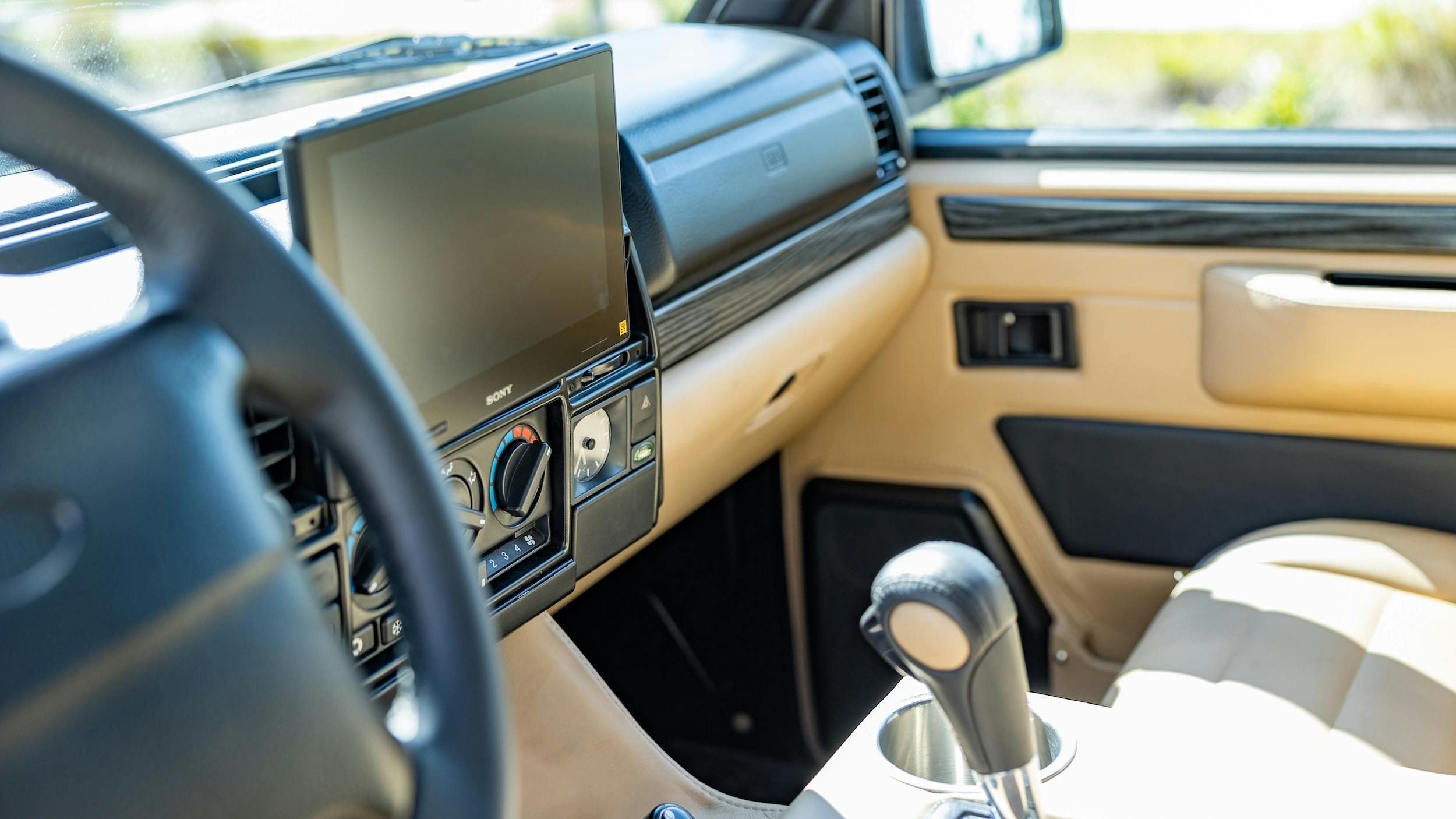














































Looks like a pretty amazing facility. I will profess to not understand super-expensive resto off roaders like this as I would want to scratch or damage them.
I still prefer Toyota Land Cruisers.
That they rape Land Rovers I can understand that a little bit, but they should keep their hands of Jaguar E-types.